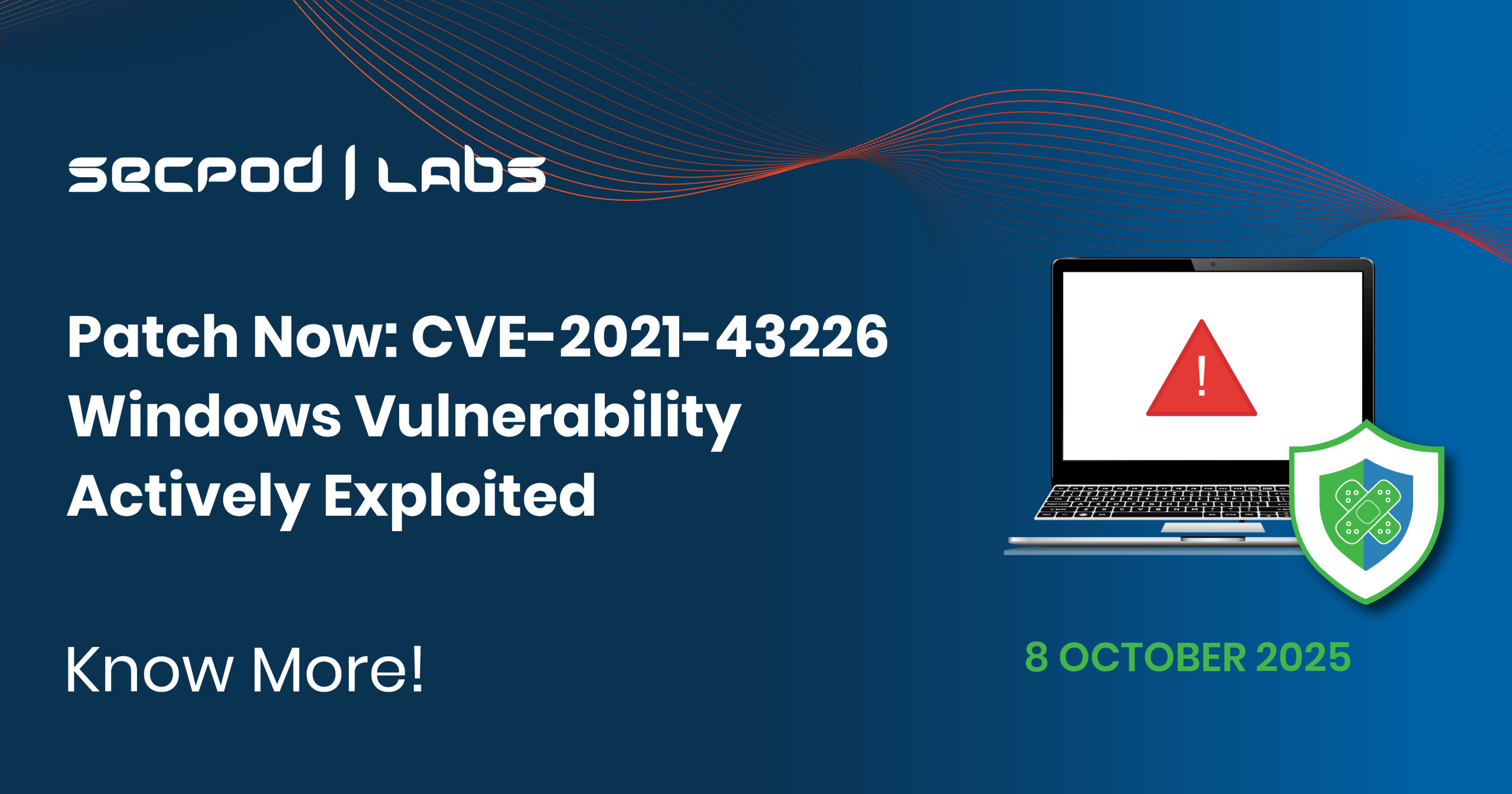The Cybersecurity and Infrastructure Security Agency (CISA) has issued a warning regarding the active exploitation of a privilege escalation vulnerability in Microsoft Windows, identified as CVE-2021-43226. This vulnerability resides within the Common Log File System (CLFS) driver and is being leveraged in targeted campaigns, particularly in ransomware operations.
Vulnerability Details
CVE-2021-43226 is a high-severity privilege escalation vulnerability in Microsoft’s Windows Common Log File System (CLFS) driver that allows local attackers with basic privileges to gain SYSTEM-level access. Disclosed and patched in December 2021, it stems from improper validation of user-supplied data in the CLFS driver’s memory routines, which can be exploited through crafted log files to trigger a buffer overflow and execute arbitrary code with elevated privileges. The flaw affects multiple Windows versions, including Windows 10, 11, and Server editions.
Recently added to CISA’s Known Exploited Vulnerabilities (KEV) catalog in October 2025, CVE-2021-43226 has seen renewed exploitation in ransomware campaigns. Attackers use it to escalate privileges after gaining initial access—enabling them to disable defenses, deploy malware, and fully compromise systems. Immediate patching via Microsoft’s security updates is strongly advised.
Affected Products
The vulnerability affects multiple Windows versions, including:
- Microsoft Windows 10 (all versions)
- Microsoft Windows 11 (all versions)
- Windows Server 2016
- Windows Server 2019
- Windows Server 2022
- Windows Server 2008 R2 SP1
- Windows 7 SP1
Root Cause
The root cause of CVE-2021-43226 lies in the improper validation of user-supplied data within the CLFS driver’s memory management routines. Attackers can exploit this weakness by crafting malicious CLFS log files that trigger buffer overflow conditions, leading to arbitrary code execution with elevated privileges.

Attack Vector
The exploit requires local access and standard user privileges as prerequisites, making it particularly dangerous in enterprise environments where attackers have already gained an initial foothold through phishing or social engineering attacks. Attackers often chain this vulnerability with remote code execution flaws. They gain initial entry via remote code execution flaws and then use CVE-2021-43226 to move laterally within a network.
Impact
Successful exploitation of CVE-2021-43226 allows attackers to:
- Bypass security controls
- Elevate their privileges to SYSTEM level access
- Access sensitive data
- Disable security tools
- Deploy ransomware payloads across workstations and servers
Mitigation & Recommendations
CISA has established a mandatory remediation deadline of October 27, 2025, requiring federal agencies and critical infrastructure organizations to implement security patches immediately. All affected users are recommended to:
- Apply Microsoft’s security updates without delay.
- Ensure endpoint protection solutions are configured to detect and block known exploitation attempts.
For systems unable to receive immediate updates, Microsoft recommends implementing Application Control policies and Windows Defender Exploit Guard as temporary mitigations. Organizations using cloud services should follow the guidance in Binding Operational Directive (BOD) 22-01.
Instantly Fix Risks with Saner Patch Management
Saner patch management is a continuous, automated, and integrated software that instantly fixes risks exploited in the wild. The software supports major operating systems like Windows, Linux, and macOS, as well as 550+ third-party applications.
It also allows you to set up a safe testing area to test patches before deploying them in a primary production environment. Saner patch management additionally supports a patch rollback feature in case of patch failure or a system malfunction.
Experience the fastest and most accurate patching software here.

